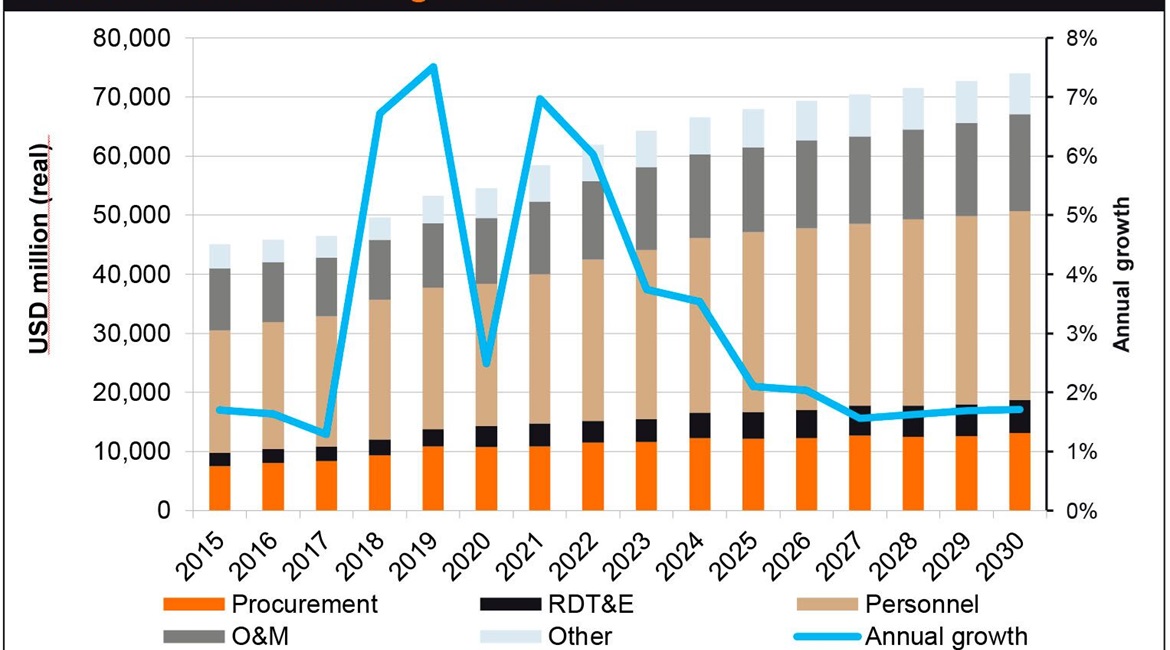
South Korea is moving closer to the implementation of a new quota system for industrial collaboration that will prioritise joint production and exports.
Janes understands that it is possible that the system will replace South Korea's defence offset guidelines, which have traditionally prioritised technology transfers.

South Korea is forecast by Janes to invest about USD78 billion in defence procurement and research and development (R&D) between 2021 and 2025. (Janes Defence Budgets)
The new ‘industrial co-operation quota system' was first proposed in 2018 but its implementation has been delayed due to the requirement for a legal framework through which the scheme will be executed.
This legal framework is now close to being finalised through a proposed amendment to South Korea's Defense Acquisition Program Act.
Janes understands that this amendment is currently being assessed by the Defense Commission Board of the country's National Assembly before approval and formal introduction.
Once approved, relevant regulations and guidelines to support the new industrial co-operation quota system will be devised and implemented by South Korea's Defense Acquisition Program Administration (DAPA). However, a timeline for its introduction has not yet been confirmed.
DAPA told Janes that the industrial co-operation quota system policy is intended to “change the priority” of the country's defence-industrial collaboration policy from “the acquisition of defence technologies” to the “promotion of the defence industry and defence exports”.
This is a direct reference to South Korea's drive to position the country's defence-industrial base as an “engine of growth” for the national economy. The aim is to increase the defence-industrial base's share in both domestic and international defence markets.
Looking to read the full article?
Gain unlimited access to Janes news and more...


